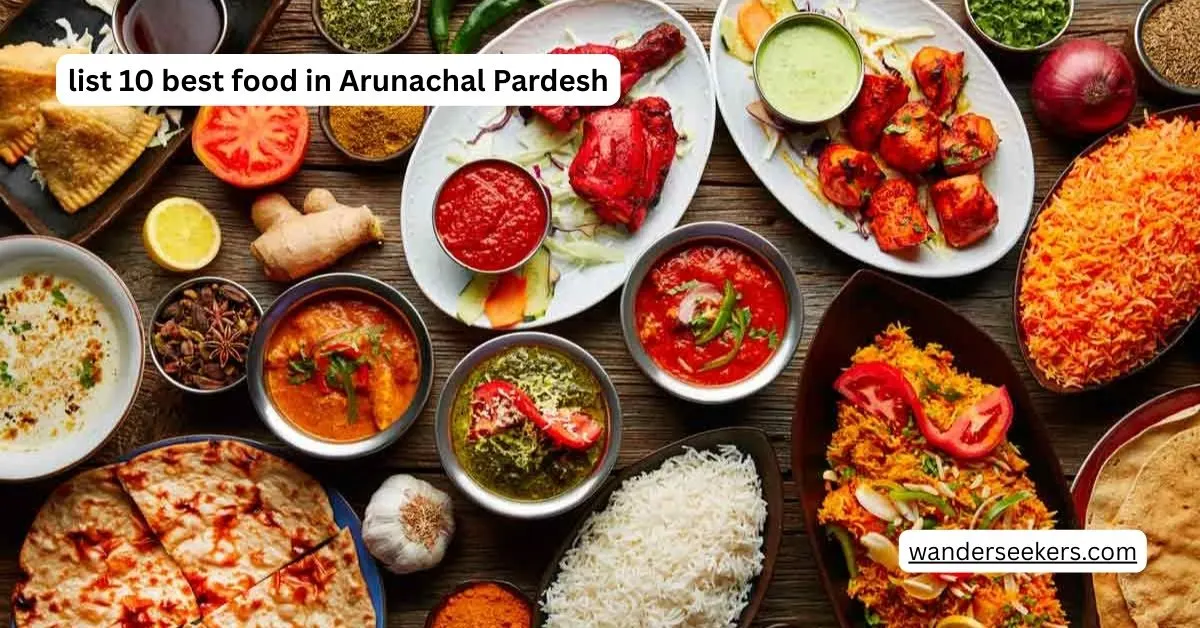Arunachal Pradesh offers a unique and diverse culinary experience, influenced by its tribal culture and natural ingredients. Some of the best foods include Thukpa, a warm and nourishing noodle soup with vegetables and meat, perfect for the cold climate. Apong (Rice Beer) is a traditional fermented drink enjoyed during festivals and gatherings. Bamboo Shoot Curry is a flavorful dish made with tender bamboo shoots, often cooked with pork or fish. Momos, steamed dumplings filled with meat or vegetables, are a popular snack across the region. Pika Pila is a spicy chutney made with fermented bamboo shoots, pork fat, and King chilies, adding a tangy kick to meals. Gyapa Khazi, a unique rice dish, is prepared with fermented cheese, meat, and aromatic spices, offering a rich and creamy taste. Lukter, a dish of dried meat with chili flakes, is loved for its smoky and spicy flavors. Pehak, a fermented soybean chutney, is a bold and pungent side dish that enhances simple meals. Marua, a millet-based dish, is nutritious and commonly eaten as porridge or flatbread. No meal is complete without Butter Tea, a traditional drink made with tea leaves, yak butter, and salt, providing warmth and energy. These dishes reflect the rich culinary heritage of Arunachal Pradesh, making it a fascinating destination for food lovers.
Table of Contents
1. Thukpa
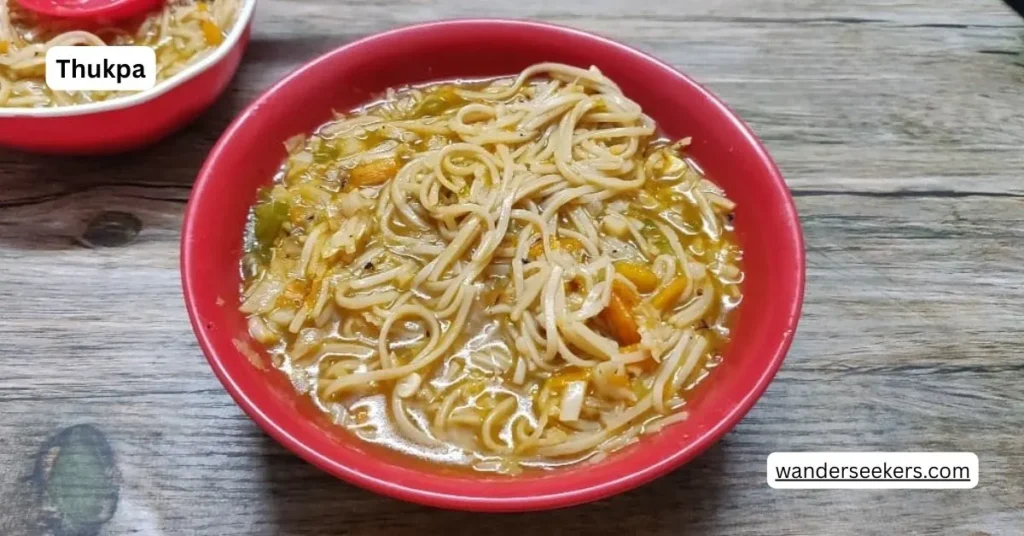
Thukpa is a hearty noodle soup originating from Tibet and popular in northeastern India, Nepal, and Bhutan. It consists of wheat or rice noodles, a flavorful broth, and a mix of vegetables or meat, often chicken or mutton. The broth is seasoned with garlic, ginger, onions, tomatoes, and aromatic spices, creating a warming and deeply satisfying dish. There are different variations of Thukpa, including vegetarian and spicy versions such as Amdo Thukpa and Nepali-style Thukpa, each reflecting local influences. It is commonly enjoyed in cold regions due to its comforting and nourishing qualities. Thukpa is not just food but a reflection of Himalayan culinary traditions, blending bold flavors with simple, wholesome ingredients. Whether served at home or in roadside eateries, it remains a favorite dish for warming up during chilly weather, offering a delightful mix of textures, spice, and nourishment in every bowl.
2. Apong (Rice Beer)
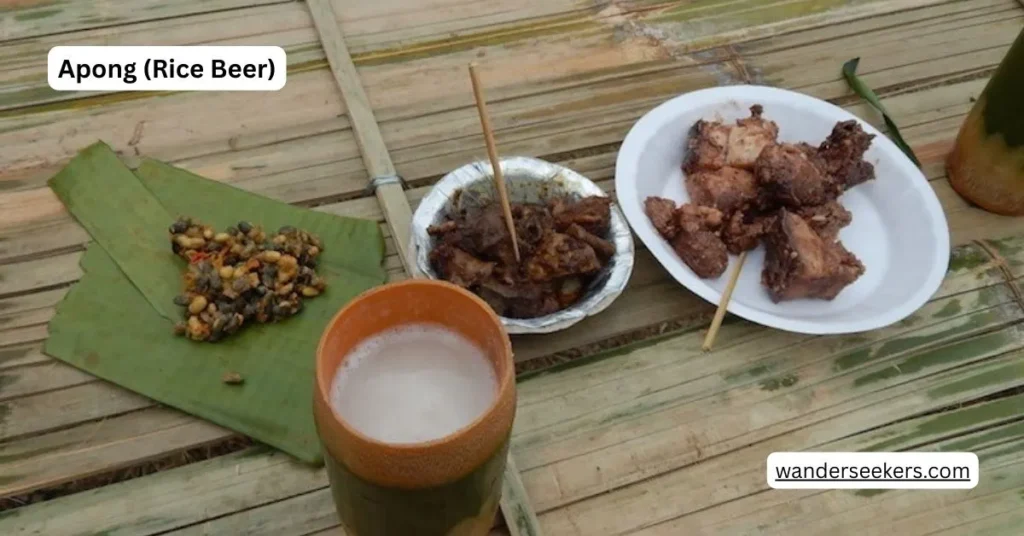
Apong is a traditional rice beer deeply rooted in the culture of northeastern India, particularly among the Mishing tribe of Assam. Made from fermented rice and herbs, it is brewed using age-old techniques that have been passed down through generations. The fermentation process gives Apong its unique earthy flavor and mild alcoholic content. There are two main types of Apong—Nogin Apong (black rice beer) and Poro Apong (lighter, clearer rice beer). The brewing method involves fermenting rice with a mix of medicinal herbs and filtering it to achieve the desired taste. The result is a naturally crafted beverage enjoyed during festivals, rituals, and community gatherings. Apong is more than just a drink; it represents tradition, togetherness, and the deep connection of the indigenous communities with nature. As a locally brewed, organic drink, it continues to hold significance in northeastern Indian culture, cherished for its authenticity and heritage.
3. Bamboo Shoot Curry
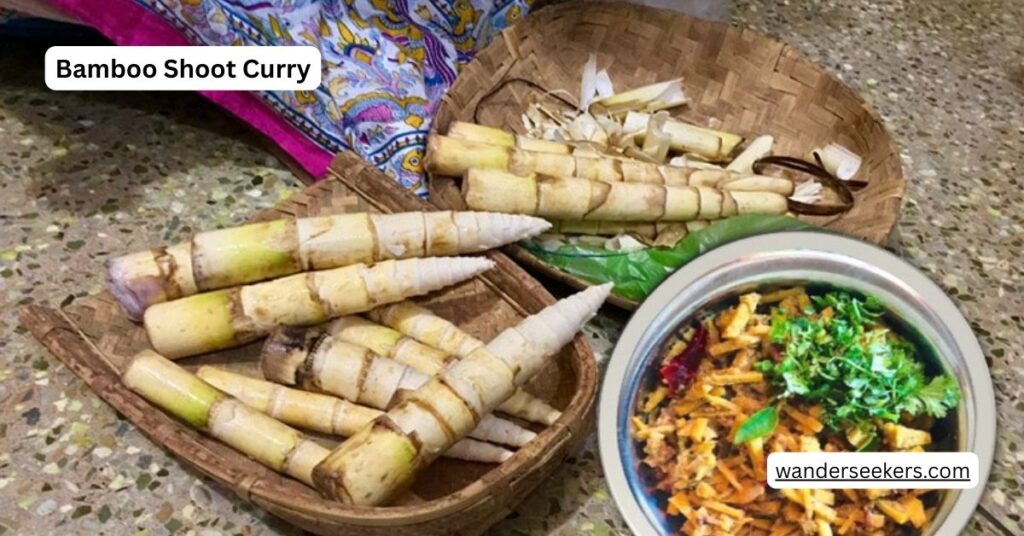
Bamboo Shoot Curry is a flavorful dish popular in northeastern India, particularly among the tribes of Assam, Nagaland, and Arunachal Pradesh. Made with tender bamboo shoots, the curry has a distinctive earthy aroma and a slightly tangy taste. Bamboo shoots are rich in fiber and nutrients, making this dish both delicious and healthy. The curry is prepared by cooking fresh or fermented bamboo shoots with ingredients like mustard seeds, garlic, ginger, chilies, and sometimes tomatoes or fermented fish. The use of local spices enhances its depth of flavor, creating a unique and aromatic dish. Bamboo Shoot Curry pairs well with rice and is a staple in northeastern cuisine, reflecting the region’s deep connection with nature and traditional cooking methods. The dish is loved for its combination of bold flavors and rustic appeal, offering a taste of the rich tribal culinary heritage of India.
4. Momos
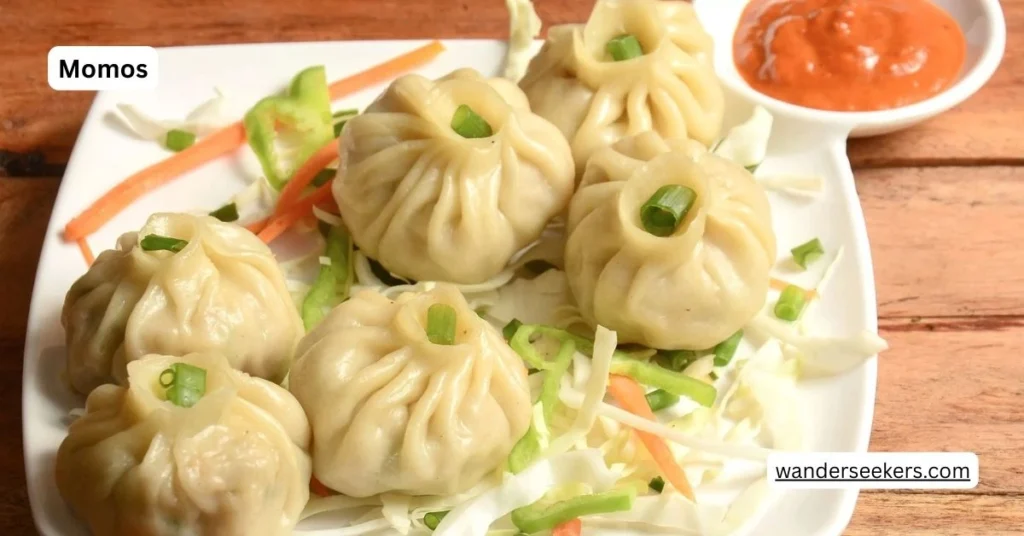
Momos are delicious dumplings that originated in Tibet and Nepal but are now popular across India and beyond. These bite-sized delights consist of a soft, thin wheat flour wrapper filled with a savory mixture of vegetables, chicken, or pork, seasoned with garlic, ginger, and aromatic spices. Momos are typically steamed, though variations like fried momos and tandoori momos offer different textures and flavors. They are served hot, often accompanied by spicy red chili chutney and a mild garlic or sesame sauce. Loved for their simplicity and rich taste, momos have become a street food favorite, especially in northern and northeastern India. Their soft, juicy filling and delicate wrapper make them an irresistible snack or meal option. Whether enjoyed at bustling food stalls or restaurants, momos showcase a blend of Tibetan, Nepali, and Indian culinary influences, offering a comforting and flavorful experience in every bite.
5. Pika Pila
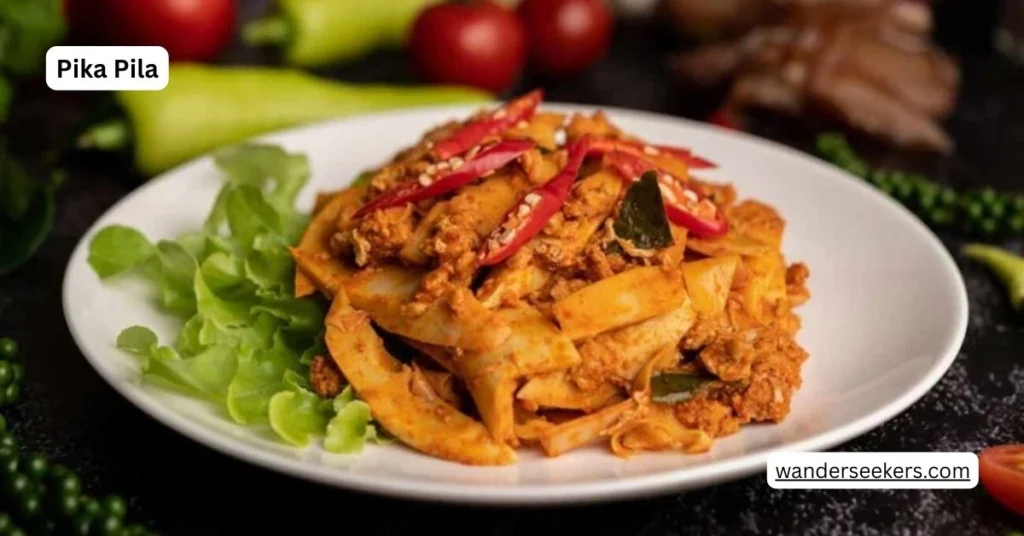
Pika Pila is a traditional pickle from Arunachal Pradesh, cherished by the Apatani tribe for its bold, tangy flavors. Made primarily with bamboo shoots, ginger, chili, and local herbs, this pickle is known for its distinctive taste and long shelf life. It plays a significant role in the region’s cuisine, often served as an accompaniment to rice-based meals. The preparation process involves fermenting bamboo shoots and mixing them with spices, allowing the flavors to deepen over time. The addition of mustard oil enhances its pungency, making it a flavorful side dish that complements simple, home-cooked meals. Pika Pila is more than just a pickle—it represents the rich culinary heritage of the Apatani people. With its earthy and spicy notes, it is a beloved condiment that showcases the tribe’s deep-rooted connection to nature and traditional food preservation techniques.
6. Gyapa Khazi
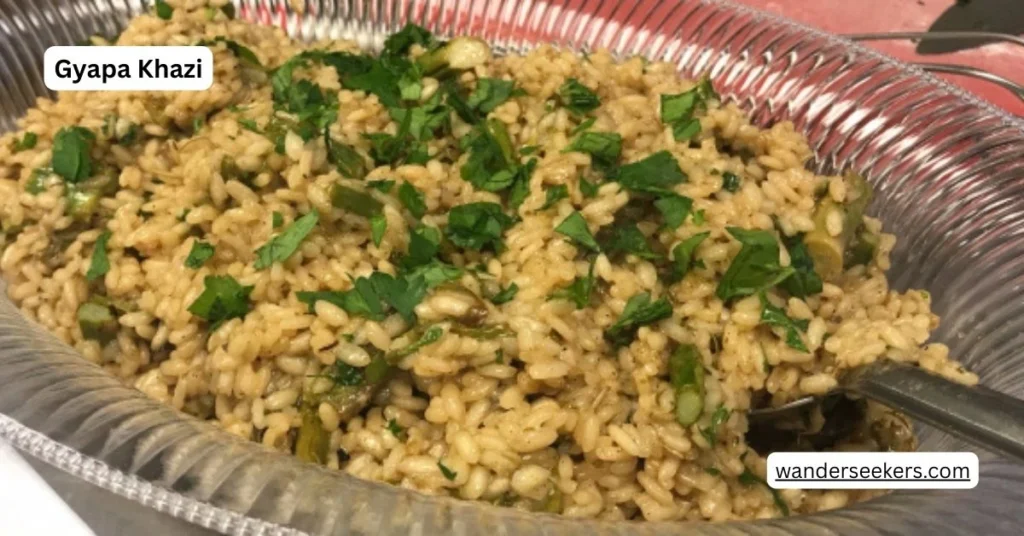
Gyapa Khazi is a traditional rice dish from Arunachal Pradesh, known for its rich flavors and aromatic spices. It is often prepared with locally sourced ingredients like rice, dried fish or meat, and fermented bamboo shoots, which give the dish a distinctive tangy taste. The preparation involves slow cooking the rice with herbs, chilies, garlic, and indigenous spices, enhancing its depth of flavor. Some variations of Gyapa Khazi include wild greens and seasonal vegetables, making it a wholesome and nutritious meal. This dish reflects the culinary heritage of the indigenous tribes of Arunachal Pradesh, who rely on natural fermentation and locally grown produce. Served hot and fresh, Gyapa Khazi is enjoyed in traditional feasts and family gatherings, embodying the flavors of the northeastern region. With its combination of texture and taste, it remains a cherished part of tribal cuisine, offering a unique experience to food lovers.
7. Lukter
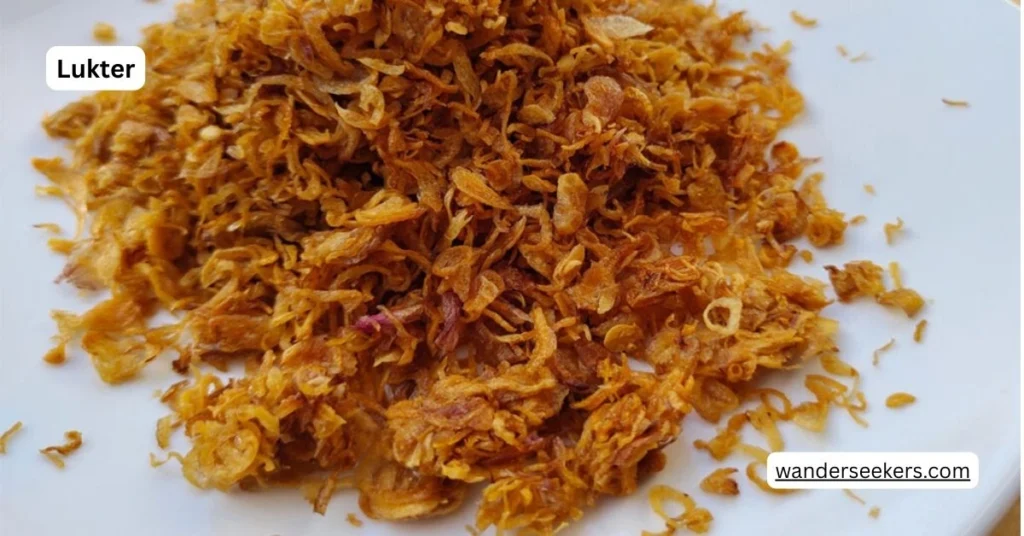
Lukter is a traditional smoked meat dish from Arunachal Pradesh, particularly popular among the Monpa tribe. It consists of sun-dried or smoked buffalo meat, which is then lightly roasted and flavored with aromatic ingredients like Bhut Jolokia (ghost pepper), garlic, and salt, giving it a fiery and smoky taste. The preparation process enhances its shelf life, making it a favored dish for cold mountainous regions where food preservation is essential. Lukter is often enjoyed with rice and simple side dishes, allowing its bold flavors to stand out. With its rich umami taste and distinct smokiness, Lukter represents the Monpa tribe’s deep-rooted culinary traditions. The dish is a true reflection of the indigenous lifestyle, emphasizing the use of locally sourced ingredients and traditional preservation methods. Lukter is a flavorful tribute to the food heritage of Arunachal Pradesh, offering a taste of the region’s authentic tribal cuisine.
8. Pehak

Pehak is a traditional spicy fermented soybean chutney from Arunachal Pradesh, particularly popular among the Apatani tribe. It is made by fermenting soybeans, which develop a strong umami flavor, then blending them with fiery Bhut Jolokia (ghost pepper), garlic, and salt for a rich, pungent taste. The fermentation process enhances its depth of flavor and makes it a unique accompaniment to meals. Pehak is typically served with steamed rice and other tribal delicacies, adding an intense, smoky spice to the dish. This chutney reflects the Apatani people’s expertise in fermentation and indigenous food preservation techniques. With its bold heat and deep flavors, Pehak is not just a condiment but a symbol of the region’s culinary heritage. It embodies the essence of tribal traditions, showcasing the resourcefulness and flavorful diversity of Arunachal Pradesh’s food culture.
9. Chura Sabzi
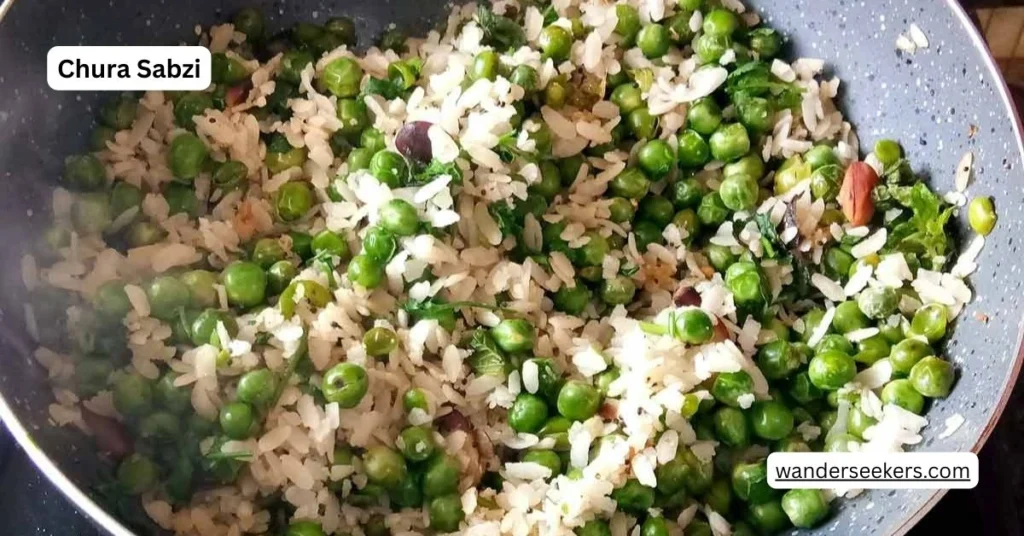
Chura Sabzi is a traditional dish from Arunachal Pradesh, made using flattened rice (chura) and locally sourced vegetables. It is a simple yet flavorful dish, often prepared with mustard leaves, potatoes, or other seasonal greens, creating a hearty and nutritious meal. The preparation involves soaking chura to soften it before cooking it with spices like garlic, chilies, and turmeric. Some variations include a light tempering of mustard seeds and onions, adding depth to the dish. It is commonly paired with fermented side dishes or meats, enhancing its rustic flavor. Chura Sabzi reflects the tribal communities’ reliance on locally available ingredients and simple cooking methods. It is a staple dish, enjoyed in everyday meals as well as traditional gatherings. With its unique blend of textures and flavors, this dish highlights the resourcefulness and rich culinary traditions of Arunachal Pradesh.
10. Fish Curry with Mustard
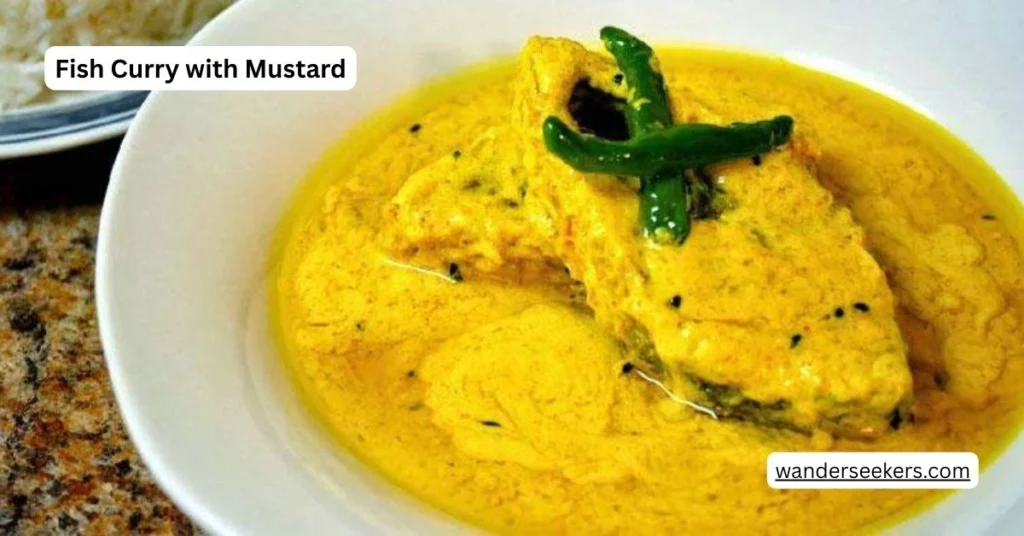
Fish Curry with Mustard, known as Shorshe Maach in Bengal, is a flavorful dish where fish is cooked in a rich, mustard-based gravy. The key ingredient is freshly ground mustard seeds, which impart a sharp, pungent taste that defines the dish. The curry is prepared by lightly frying fish—typically Rohu, Hilsa, or Catla—and then simmering it in a mustard-flavored sauce with green chilies, turmeric, garlic, and mustard oil. The mustard oil enhances its depth of flavor, while the chilies add a subtle heat. This dish is a staple in Bengali and Odia cuisine, often served with steamed rice. Its bold, earthy taste and silky mustard gravy make it a cherished comfort food in eastern India. With its perfect blend of spice and aroma, Fish Curry with Mustard showcases the richness of regional Indian flavors, offering a delightful, authentic experience for seafood lovers.
